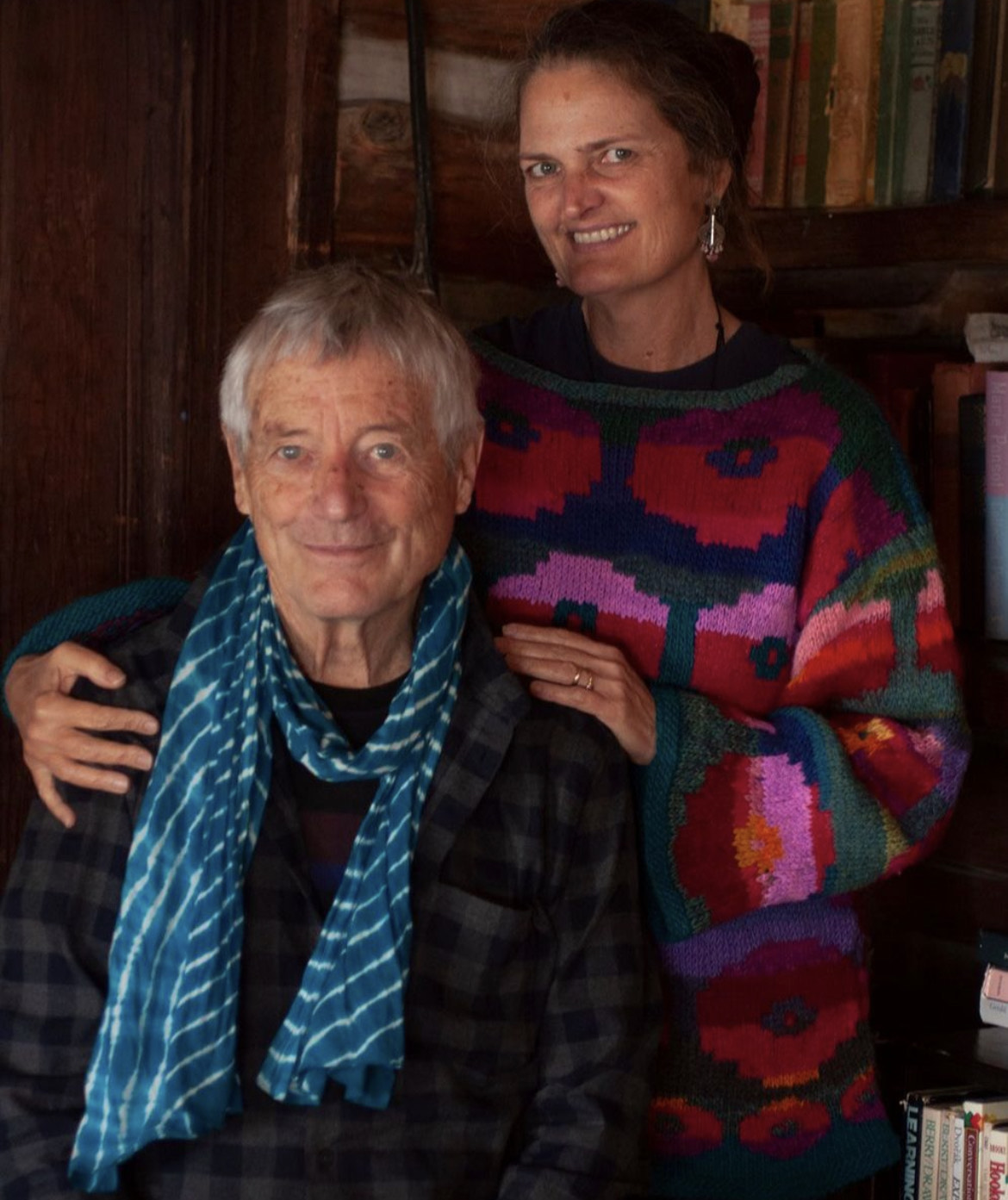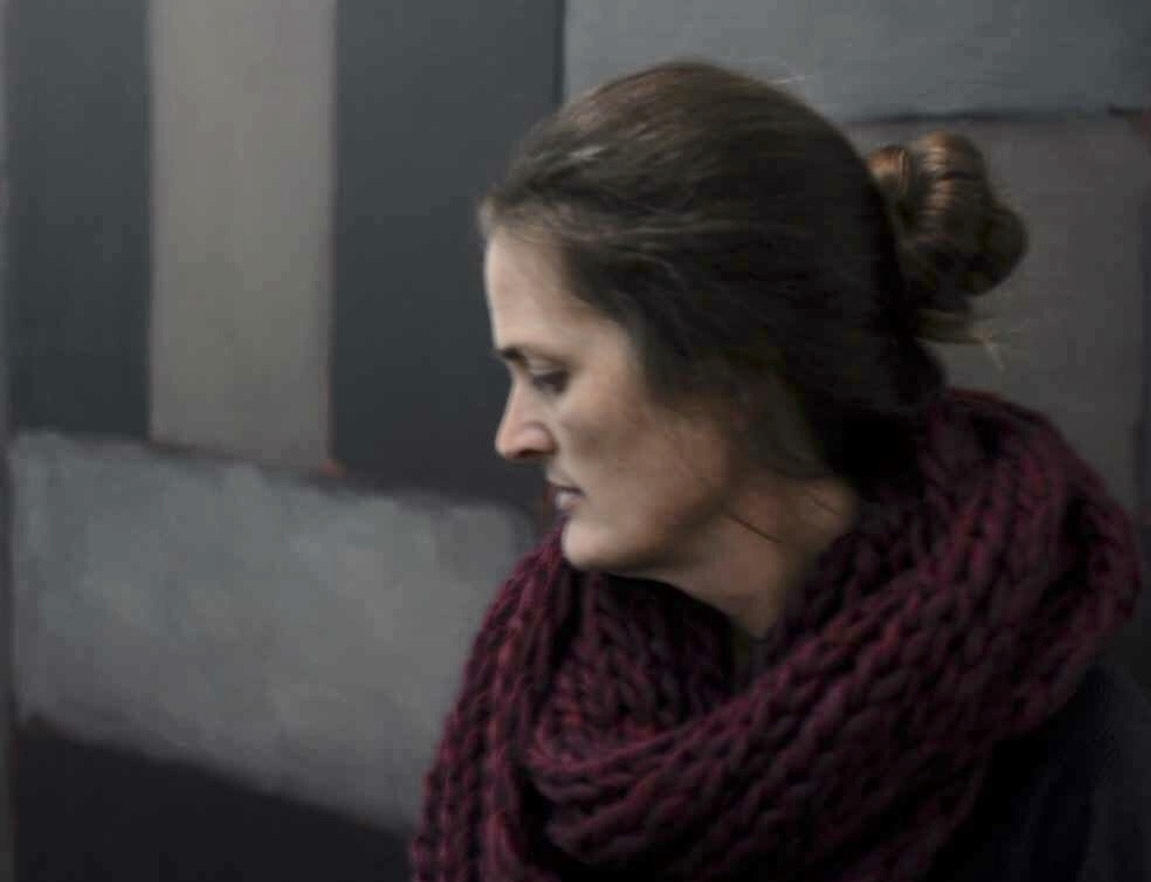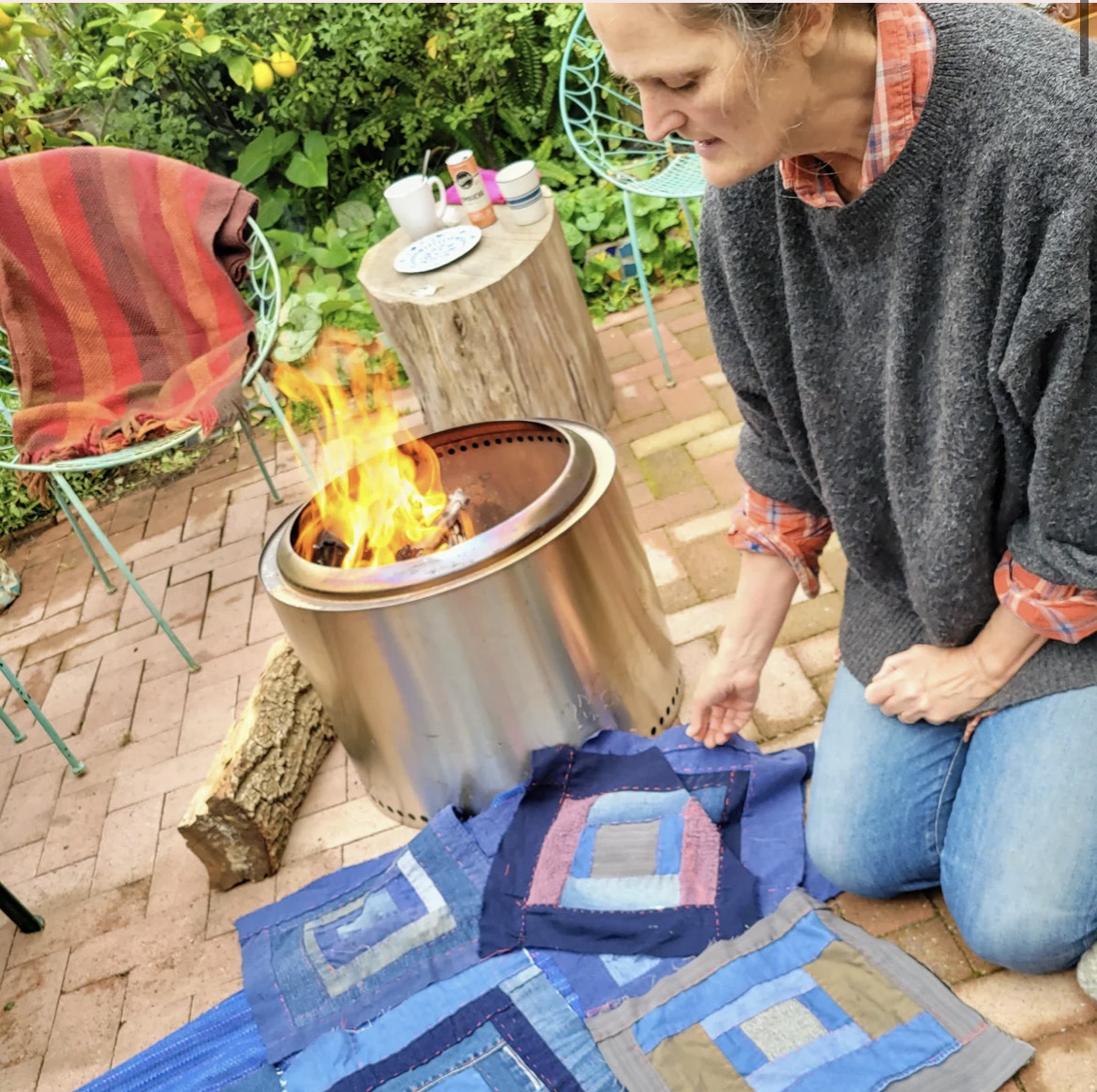Erin Gafill grew up at remote Big Sur California and had a creative childhood that connected to imagination and materials which has carried her through life. It is worth noting upfront that her uncle is colourful knit legend Kaffe Fassett. I chatted with Erin online from Monterey California as part of my Churchill Fellowship investigating ways that being hands-on with clothes can help reduce textile waste and enhance wellbeing.
“As a child, everything we played with was made from cast offs, that is what our community did. There was the economic aspect and the connection to imagination and materials – that is why we did it.

Erin caption: Me with my sweater with my uncle Kaffe Fassett, textile designer. The sweater is inspired by one of his patterns and made from scrap yarn from my mother’s stash
I am a professional painter. I feel the act of making with my hands is a path to wellbeing. We shouldn’t have to be reminded of that because it is innate. We have become removed from making – our clothes, food and entertainment. I was lucky to grow up under-resourced. The junk that was left around became our resources for making. We made a lot of costumes as kids, living in a very vibrant artistic, imaginative culture. As a teenager, I would take old things and make new or adapt into clothes. I was interested in knitting scarves and hats.
Two and a half years ago, Jaki from Slowfiber asked me to take a pledge to not buy new clothes for six weeks. That wasn’t just about not buying, it was also about reflecting on how much I already owned. I have been gathering material and fabric for most of my life, and have been making quilts out of my grandma’s old clothes.
The invitation Jaki offered was a pivot to be connected to clothes as a source of creativity and I have been revisiting all the clothes I own and making them make sense today. We are looking forward to dye camp as a way of connecting to the natural colours from where I live. It is a sense of the visual aesthetic and utilitarian combining. I can clear noxious weeds on the land and make a dye for a t-shirt and then be quite excited to be wearing it because it is infused with colour from my habitat.
Through this process, I am realising I have everything I need already around me. I have no reason to buy anything new for the rest of my life. It has made me more conscious that if I choose to buy I am more thoughtful, and not shopping for entertainment or anti-anxiety. I look at fashion and am aware how much dis-ease there is from things that are being sold to us. I am choosing to be more conscious, and anything I wear now I want to have a connection to it. Thoughtfully and with intentionality, the making and mending and the wearing, investing my creative mind into something that is also very utilitarian.

Erin caption: Wool Scarf I’ve knitted (in front of Sean Scully painting at the deYoung museum in SF
When I am stitching, I feel calm. When I pick up a needle and thread, it is a path for me to feel grounded and whole, and it improves my wellbeing instantaneously. When my hands are working with needle and thread, I access that connection which is a path to wellbeing for me and I love sharing that with others. Sewing by yourself is good but simply sewing together, even if doing it via zoom make and mend gatherings, there is a quality of genuine pleasure and ease amongst a group of strangers who sit and sew which was eye-opening for me.
Through the Slowfiber community, Jaki is introducing this to people who are discovering a lifeline to each other and they keep coming back. It reminded me of how it was in the country growing up. Now there is so much commercial pressure and people are busy. Culturally, this gathering and making together was lost and not valued. But we are coming back into awareness of it now.
Shop, shop, shopping certainly makes it easy to look a certain way, but when you step away and reflect you see a larger culture change in terms of what matters, what we should be investing our time and energy in. If you don’t know about other ways, and don’t have family or connections who do it, you may fall for the commercial way.

Erin caption: in my garden working on a project salvaging old fabrics (denim, linen, terry cloth) by making them into log cabin style squares inspired by American patchwork quilts
There is a remembering, a coming back to ourselves and the simple things that matter. For people who are happy to be themselves and not impressively showing off, there is an act of engagement around sewing together. I have watched this happen in my classes and seen the shift happening back towards what I was lucky to experience in my life growing up.
The mental health aspects of this are huge because it is a way to self-regulate. It is more important how the work makes me feel, not the look itself. Through the process, I am invested in not just the outcome but the felt sense of wellbeing. When I spend time dyeing and onion-skin scarf, I feel a tremendous mental and spiritual connect to it.
If we are not individually contributing to the clothing waste issue we are taking away a negative. It is socially empowering if see others pushing away from commercialisation, it helps shape perceptions of how to go about living in the world. We can be making and mending rather than shopping every week.
I work as a teacher at cultural organisations such as museum and it is so much more engaging if we can hook in not from a do good, but from a FEEL good perspective. People who get involved in making rather than consuming become aware of all the stages involved in making a wool garment, for example, from growing the fleece, spinning it into yarn then knitting it. There’s a lot of physical work and resources involved, which you understand when you go through the process yourself and have skin in the game. It gives us appreciation and makes us more thoughtful.
I am grateful to have had these experiences in childhood. I wish all children could cultivate the self-calming and anti-anxiety benefits of creativity and the empowering sense of capacity and autonomy that comes with these skills.
See more of Erin’s work on Instagram @erinleegafill and find slowfiber @slowfiber